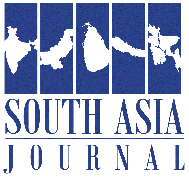
“The paradox of development is that while economic growth lifts many out of poverty, it also deepens inequalities and fractures societies if not managed inclusively.”
— Amartya Sen
South Asia, home to nearly 2 billion people, remains one of the fastest-growing regions economically. Countries like India, Bangladesh, and Sri Lanka have seen a consistent rise in GDP, with India’s economy projected to grow at 6.5% in 2024, according to the IMF. Bangladesh, once labelled as a least-developed country, now surpasses India in per capita income, standing at approximately $2,688 in 2023. However, the paradox of this economic progress resides in the continuing of high poverty levels and rising income inequality. According to the World Bank, about 30% of South Asia’s population still lives below the poverty line, despite the area contributing considerably to global economic production.
Human Development Index (HDI) rankings highlight these inconsistencies even further. Despite political unrest, Sri Lanka tops South Asia in the HDI with a score of 73, whereas India, Bangladesh, and Pakistan are ranked 132, 129, and 161, respectively. The unequal distribution of resources in healthcare, education, and quality of life is also reflected in these discrepancies, in addition to economic advancement. Although literacy rates have increased, female literacy is still far lower than male literacy, and rural women face extra obstacles, according to India’s National Family Health Survey (NFHS).
Purchasing Power Parity (PPP), highlights the socioeconomic gap further with India’s economy ranks as the third-largest globally based on Purchasing Power Parity (PPP), with a GDP of approximately $17.36 trillion in 2025, and a per capita PPP GDP of $11.94 thousand (IMF, 2025), followed by Bangladesh at $1.501 trillion, with a projection of $1.569 trillion for 2025, representing an estimated growth rate of 4.5% (World Economics, 2024). However, according to the Oxfam Inequality Report, wealth concentration is still high, with the wealthiest 10% of Indians owning more than 77% of the country’s total wealth, meaning that this does not convert into egalitarian living conditions (The Indian Express, 16 Jan 2023).
Healthcare Infrastructure is another contradictory topic, although life expectancy has grown due to technological improvements and increasing spending on healthcare, systemic failings are shown by fundamental health indicators including maternal mortality, hunger, and access to safe drinking water. According to data from India’s National Sample Survey Office (NSSO), more than 60% of Indians still receive their medical care privately, which makes low-income households’ financial burden even worse. Similar to this, Pakistan and Nepal still have inadequate public health systems, with healthcare spending accounting for only 1% to 2% of GDP.
Crime and social justice Crime and social justice metrics present a similarly intricate scenario. The National Crime Records Bureau (NCRB) in India indicates a concerning increase in crimes against women, with more than 428,000 instances documented in 2022 alone. Gender-based violence persists as a significant concern throughout South Asia, indicative of entrenched patriarchal traditions that oppose progressive legislative changes. In 2022, the Human Rights Commission of Pakistan (HRCP) documented more than 5,200 instances of violence against women, whilst Ain o Salish Kendra reported 13,000 occurrences of rape and domestic abuse in Bangladesh during the same year. Nepal, while its progressive legislation, continues to grapple with child marriage, as around 41% of Nepali girls are wed before the age of 18. Afghanistan endures intensified hardships under the Taliban, with women subjected to institutional oppression, including prohibitions on education and work.
The contradictions extend to environmental policies as well. While countries pledge commitments to climate change mitigation, deforestation, industrial pollution, and unsustainable urbanization continue to rise. Bangladesh faces severe climate migration challenges, with nearly 13 million people projected to be displaced due to rising sea levels by 2050, according to the World Bank. India, despite ambitious renewable energy targets, remains one of the top global carbon emitters (UNFCCC- 12 July 2022, Migration Policy Institute- 4 September 2024, Climate Diplomacy- 16 April 2024).
The Rise of Digitalisation further exposes the society’s paradox and dilemma of development. Despite exponential increases in internet usage, digital financial inclusion, and e-governance in South Asia, a digital gap exists. India has approximately 750 million internet users, yet rural regions lack access and digital knowledge (Moinuddin, S., 2021). Pakistan has 36% internet penetration, with women much behind males. Bangladesh already has over 100 million mobile banking customers, yet rural regions still lack internet connectivity. Nepal and Afghanistan have insufficient broadband access (Robinson, 2020), marginalising rural communities from digital development. Government programs like India’s Digital India and Bangladesh’s Digital Bangladesh have increased digital service access, but the advantages are unevenly distributed. Digital platforms help women and marginalised populations by offering education and jobs, but cybercrimes, disinformation, and digital surveillance threaten democratic principles and individual liberties.
Summing-up, South Asian society has made economic progress, but it has failed to address equality, justice, and sustainability. Governments should shift from growth-focused models to inclusive development models that emphasise education, healthcare, gender equality, and sustainable economic practices. If these tensions are not addressed, South Asia may perpetuate a development cycle that enriches just a portion of its population while the remainder strive for dignity and rights.
